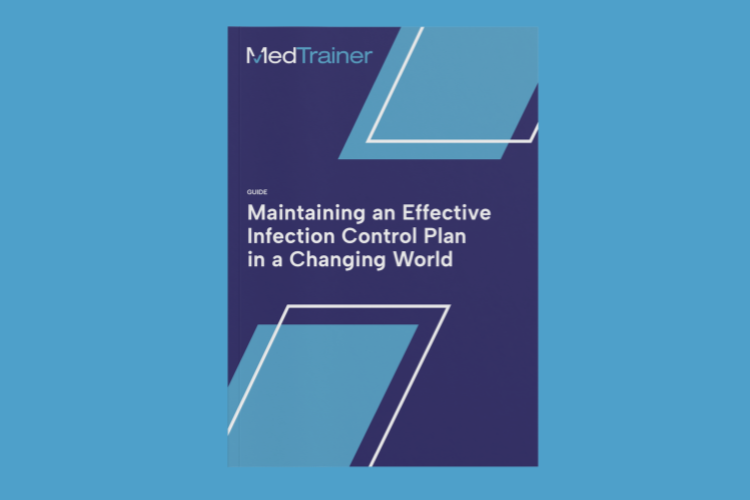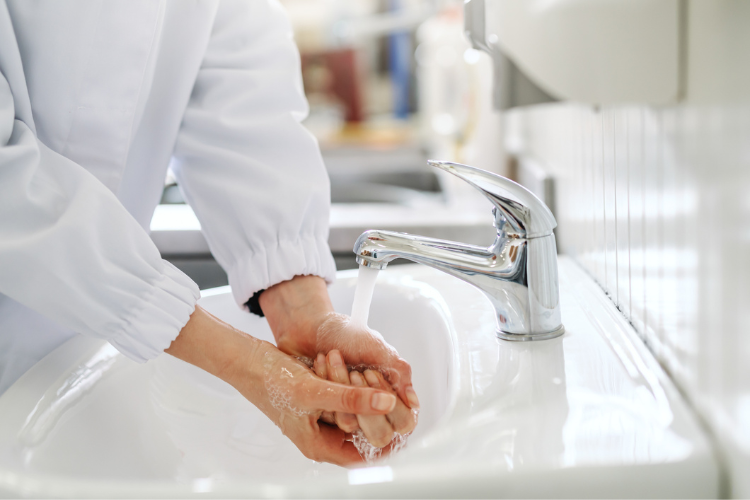Infection-causing organisms, also called pathogens, yearly lead to many healthcare-associated infections (HAIs). The Centers for Disease Control and Prevention (CDC) estimates that one in 31 patients has an HAI on any given day. Healthcare workers are the first line of defense to reducing this number by adopting infection control practices.
In this blog, I’ll discuss maintaining infection control compliance per OSHA standards, strategies for improving infection control amongst healthcare workers, and tracking compliance.
Maintaining Infection Control Compliance
There are various methods by which pathogens are transmitted, which include direct contact, body fluids, airborne particles, respiratory droplets, and contaminated food. The CDC and OSHA provide clear guidance on infection control practices to prevent the spread of infectious organisms. Some infection control practices include:
- Hand Hygiene: Workers must wash their hands before performing an invasive medical task and after removing their gloves or coming in contact with blood or bodily fluids. They must also cleanse their hands before and after contacting a patient or their environment.
- Disinfection and Sterilization: All medical devices and equipment should be disinfected or sterilized after use. Workers must cleanse devices with the recommended disinfectant and allow ample time for drying. Certain equipment, like surgical instruments, must follow specific sterilization procedures.
- Standard and Isolation Precautions: Some patients are on isolation precautions in the hospital setting since they have an infection-causing pathogen that can easily be transmitted. All workers must abide by these precautions and wear the proper personal protective equipment (PPE) to prevent the spread of HAIs. For example, a patient with COVID would be on airborne precautions, so any worker or visitor must wear an N-95 mask before entering the patient’s room.
- Universal Precautions: Healthcare providers use these standards for all patient care practices. Since healthcare workers cannot identify every patient who may transmit an infection, they must use universal precautions for every patient. For example, healthcare workers must wear gloves and other PPE when handling blood and bodily fluids.
- Environmental Controls: Environmental controls are standards for maintaining a clean healthcare setting. These may include ventilation systems, dust-control measures, operating room sterilization, and other procedures.
Strategies to Improve Infection Control
Healthcare organizations and workers should always follow infection control practices to decrease pathogen exposure. However, only some follow infection control practices all the time. I recommend using these strategies to improve infection control amongst healthcare workers:
- Have a secret auditor: Many healthcare organizations select secret auditors to monitor others’ hand hygiene practices. Typically, a unit secretary monitors and records everyone’s hand hygiene when entering and exiting patient rooms. Sometimes, patients are also selected to be secret auditors.
- Offer ongoing education: Provide regular training on infection risks and prevention techniques to meet compliance standards. Offer easy-to-read infection control highlights via screensavers or email.
- Spread awareness: Post infection control best-practice signs in areas where employees pass by frequently. Affix signs outside patient rooms to remind everyone of hand hygiene or specific patient isolation precautions.
- Provide recognition: Offer small incentives to those who promote infection control or pass their secret audit. Some examples are T-shirts, contest entries, pens, and hospital flair.
- Create an infection control campaign: Consider offering infection control practices to healthcare workers, patients, family members, and communities. Give quick tips during morning huddles and meetings.

Take a deeper dive into infection control plans in this free ebook.
Simplify Infection Control Compliance With Software
Compliance software can streamline the delivery of training and improve accessibility to policies and procedures, simplifying Infection control in your organization. Here are a few features that are especially helpful:
Online Learning Management System
Providing online infection control training using an online learning management system makes it easy for employees to complete courses and stay up-to-date. Course completion is automatically tracked to easily report to regulatory and accreditation organizations.
Incident Reporting System
Immediately and correctly filing an incident report is essential to maintain compliance when an incident or accidental exposure occurs. Incident reports provide insight into possible causes and contributing factors during unintentional events. Consider using an online incident reporting system where employees can file an incident report and notify the proper channels immediately.
Policy Management
Employees must review and acknowledge specific policies and procedures annually and upon hire to meet compliance standards. Use an all-in-one document and policy management system to draft and maintain required records, as well as ensuring they are easily accessible for employees.
Streamline and enhance your healthcare organization’s compliance and infection control standards using MedTrainer software. Contact us today to learn more about the multiple products we offer to create the perfect mix of tools to meet your organization’s needs.
